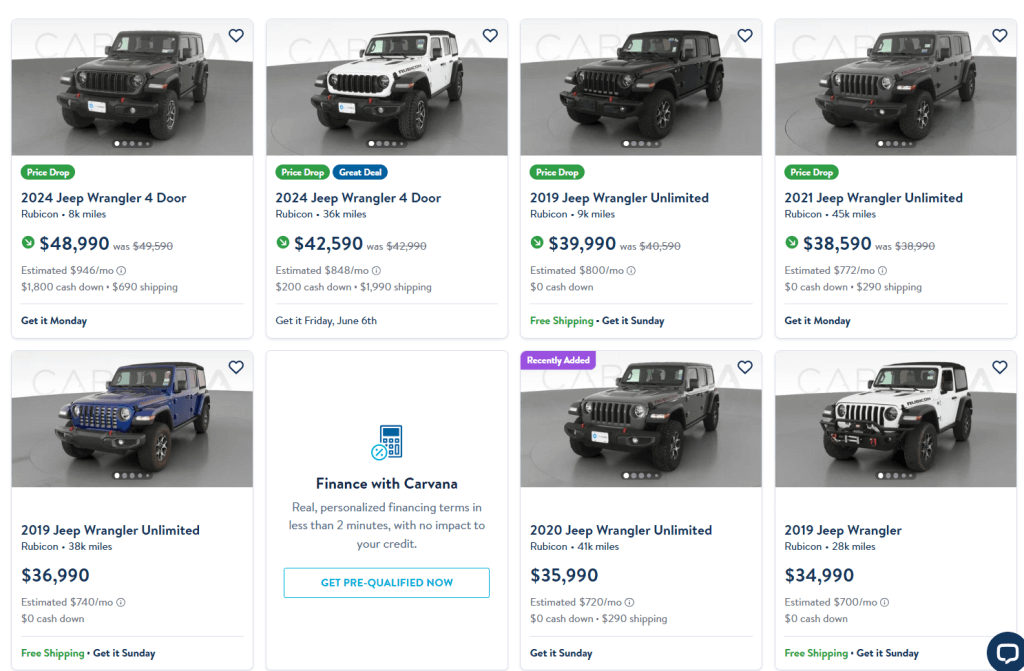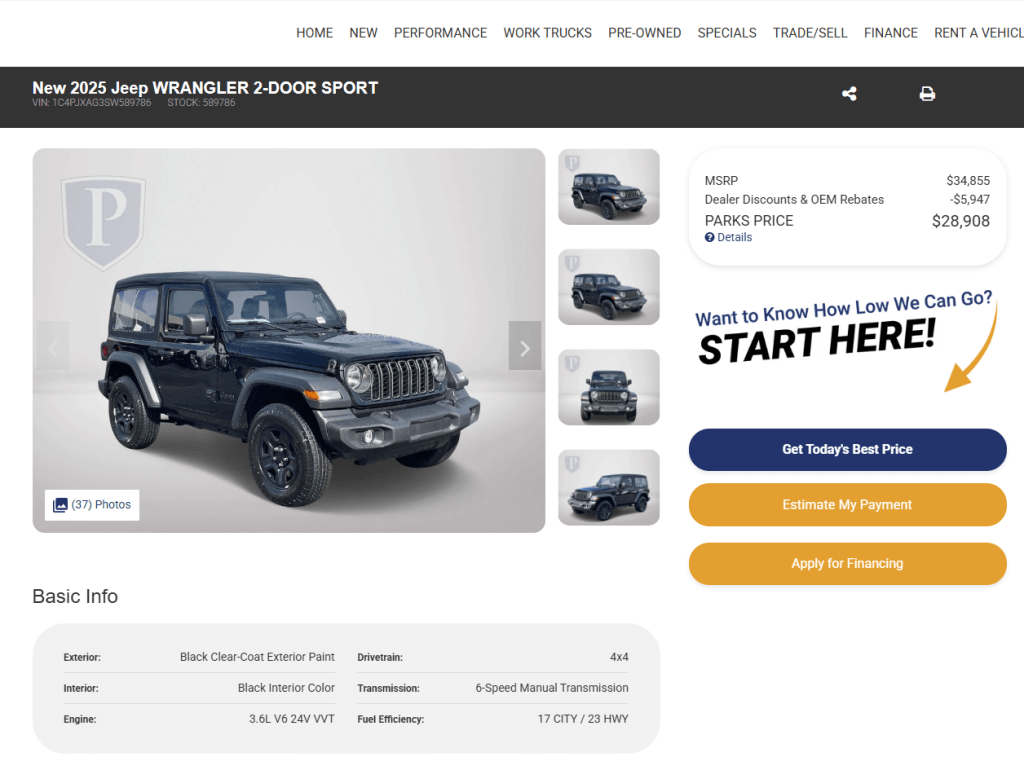Off-roading used to be an escape. A way to unplug from the modern world and hit the trail with nothing but grit, gear, and a good set of tires. Whether you were in an old Wrangler TJ, a steel-framed Tacoma, or even a budget XJ Cherokee with rust creeping up the fenders, getting off-road wasn’t about luxury or price—it was about capability, simplicity, and connection.

Fast forward to 2025, and that entry into the off-road lifestyle feels increasingly out of reach. The sticker prices on popular 4x4s have ballooned beyond what most weekend warriors, college grads, or blue-collar families can reasonably afford. What once was an accessible hobby now demands a luxury car payment—and then some.
This article explores why today’s off-road rigs are too expensive, how we’ve strayed so far from the basics, and what manufacturers must do to course-correct.

Sticker Shock: The 2025 Price Tag Problem
Let’s start with three of the most iconic off-road vehicles in 2025: the Jeep Wrangler Rubicon, Toyota Tacoma TRD Pro, and Ford Bronco Wildtrak. Each of these models represents the top tier of capability from their respective brands—and their prices show it.
Jeep Wrangler Rubicon
Back in 2018, a brand-new Rubicon Unlimited with solid axles, lockers, sway bar disconnect, and 33-inch tires could be yours for around $41,000. In 2025, that same spec now pushes north of $62,000, and if you opt for a 392 or Recon model, you’re looking at $75,000+. Even a modestly optioned Rubicon today is more expensive than a fully loaded Grand Cherokee was five years ago.
Toyota Tacoma TRD Pro
The TRD Pro was once a value-packed rig. In 2020, a V6 TRD Pro double cab started at around $45,000. In 2025, after the redesign and tech upgrades, the same truck starts around $56,000, and most buyers report paying over $60,000 after dealer markups. And this is for a midsize truck that still comes with less interior room than some compact SUVs.

Ford Bronco Wildtrak
The Bronco burst back onto the scene in 2021 and was hailed as the Wrangler’s modern rival. The Wildtrak trim, with its Sasquatch package, twin-turbo V6, and locking differentials, originally sold for $50,000–$53,000. In 2025, it routinely lists for $61,000+, with limited editions like the Everglades or Heritage models topping $70,000 before dealer adjustments.



What’s Driving the Price Surge?
Several factors have combined to drive prices sky-high, and while some are understandable, others feel like missed opportunities.
Technology Overload
Manufacturers are stuffing their off-roaders with complex infotainment systems, digital gauges, over-the-air updates, wireless phone charging, automatic climate control, radar cruise control, and 360-degree cameras. While some of these features add convenience, others add unnecessary cost, weight, and complexity—none of which help you on the trail.

Emissions and Safety Regulations
To meet modern emissions standards, off-road trucks now feature advanced engine controls, turbochargers, hybridization, and even EV components. Safety mandates add more sensors, airbags, and reinforced structures. These changes raise the baseline cost of every new model—though they also make older, simpler rigs more appealing than ever.
Supply Chain and Inflation
COVID-19’s aftermath, chip shortages, international shipping costs, and economic inflation have all impacted the automotive industry. Manufacturers cite these pressures for price increases, and while there’s some merit, the industry’s profits suggest they’re not hurting nearly as much as consumers are.
Real-World Examples: Dollars and Disappointment
Let’s compare MSRP growth for the same rigs from 2019 to 2025:
| Model | 2019 MSRP | 2025 MSRP | Increase |
|---|---|---|---|
| Jeep Wrangler Rubicon | $41,000 | $62,000+ | +$21,000 |
| Toyota Tacoma TRD Pro | $44,500 | $56,000+ | +$11,500 |
| Ford Bronco Wildtrak | $52,000 (2021) | $61,000+ | +$9,000 |
It’s also worth noting that dealer markups—especially on Broncos—can exceed $10,000 in some regions. Enthusiasts trying to buy used 2021–2023 models now find them reselling for nearly original MSRP, even with 30,000+ miles.

Why It Matters: Losing the Spirit of Off-Roading
Off-roading was never meant to be a luxury hobby. It was for the adventurers, the backyard mechanics, and those who valued capability over comfort. But the rising prices have pushed many would-be enthusiasts out of the market.
Instead of modifying their budget XJ Cherokee or older Tacoma, many younger off-roaders are left watching YouTube videos of adventures they can’t afford to participate in.
And when a vehicle becomes too expensive to risk scratching, denting, or breaking on the trail, the whole spirit of off-roading begins to fade. If you’re more worried about your fender than your line choice, you’re no longer wheeling—you’re just posing.

Voices from the Trail: What Off-Roaders Are Saying
Members of VAOffRoad.org and similar groups have been vocal about their frustration:
- “I used to wheel a $4,000 XJ with no fear. Now my Bronco cost $64K and I hesitate on every obstacle.”
- “I love my Rubicon, but I miss the days when you could pick up a decent trail rig for under $10,000.”
- “My son wants to get into off-roading, but even a stock Tacoma is out of his price range. What’s he supposed to buy?”
These aren’t just complaints—they’re signals that the current market is pushing people away from a lifestyle that should be growing, not shrinking.
Back to Basics: What Manufacturers Should Do
There’s a way out of this, but it requires a return to simplicity.
1. Bring Back the Barebones Trims
We need a factory 4×4 with manual windows, steel wheels, and lockers. Something like the old 2-door Wrangler Sport, early Toyota Hilux, or even Suzuki Samurai. Function over form. Capability over convenience.

2. Cut the Gimmicks
We don’t need 17 drive modes, terrain cameras, or apps that control the truck. Give us mechanical 4WD, simple dashboards, durable interiors, and a frame that won’t snap on the first bump.
3. Offer Budget Trail Editions
Imagine a $35,000 Wrangler or Bronco with vinyl floors, steel bumpers, recovery points, and nothing else. It’d sell like crazy. It’d also invite the next generation to get involved.
4. Support the Aftermarket
Build off-roaders that work with common lifts, tire sizes, and mods—without triggering error codes. Keep it modular and simple.
Conclusion: Off-Roading for Everyone, Not Just the Elite
Off-roading in 2025 is teetering on the edge of exclusivity. If we’re not careful, the trails will become dominated by high-end rigs built for image, not adventure. We can still reverse course, but it requires manufacturers to hear the voices of real off-roaders.
We want simple.
We want capable.
We want affordable.
And we want the kind of 4×4 that doesn’t make you wince every time a branch scrapes the paint.
Bring back the spirit of the trail. Bring back the fun. And most importantly, bring the price back down to earth.
The off-road community is ready. The question is: are the automakers listening?
Let us know your comments below!


No responses yet